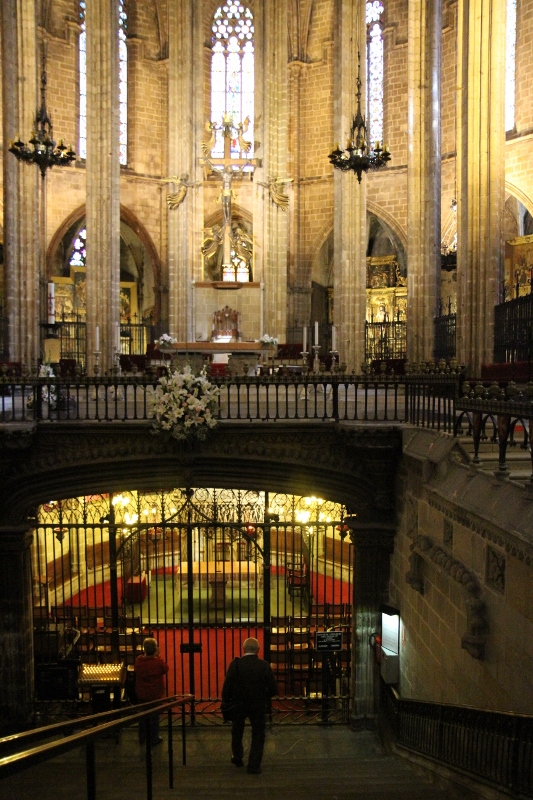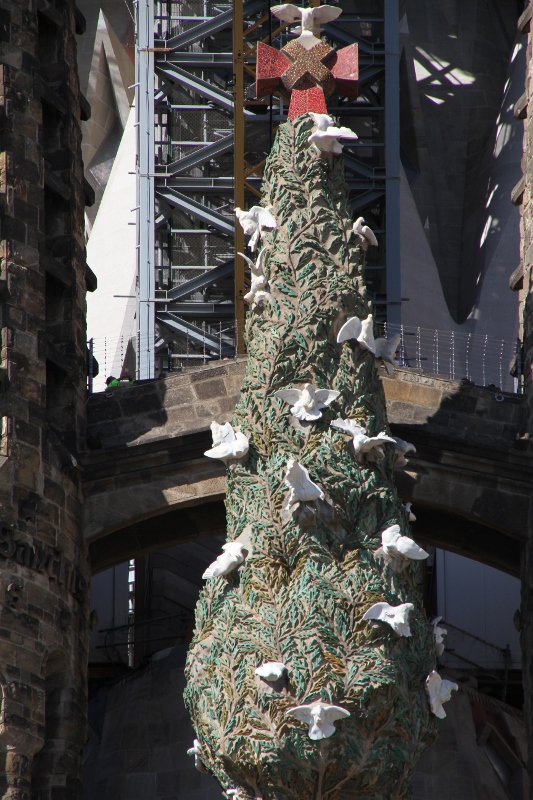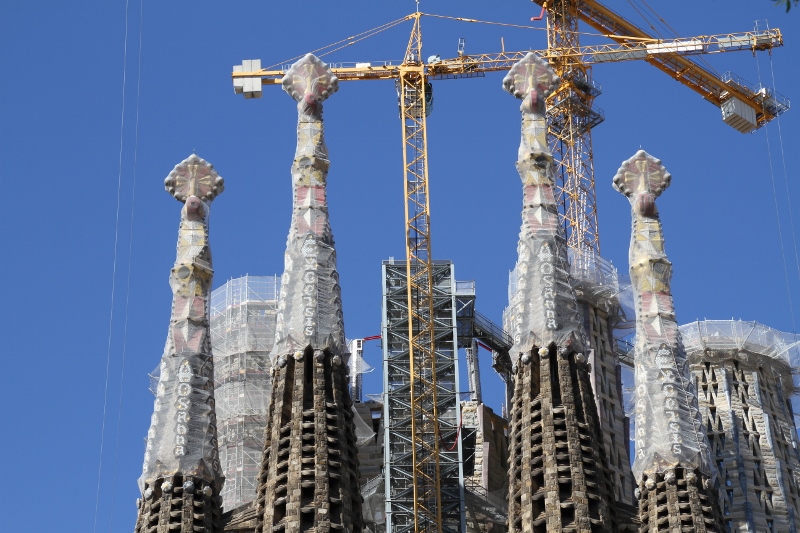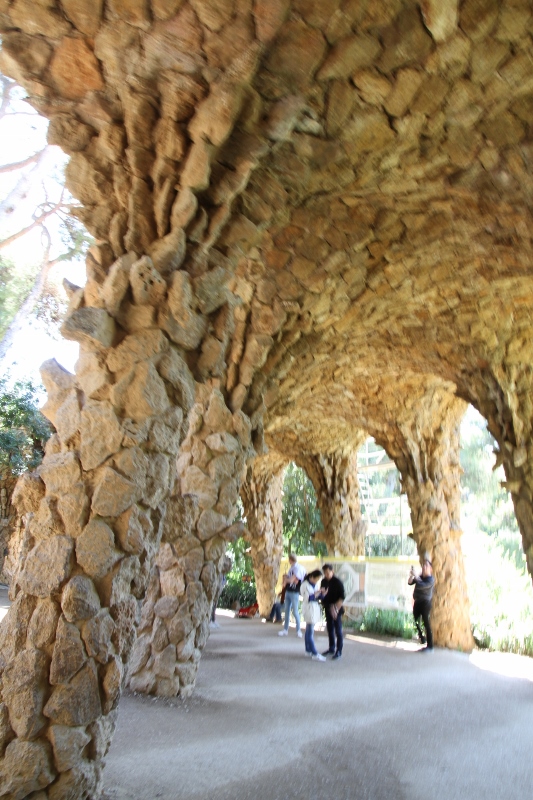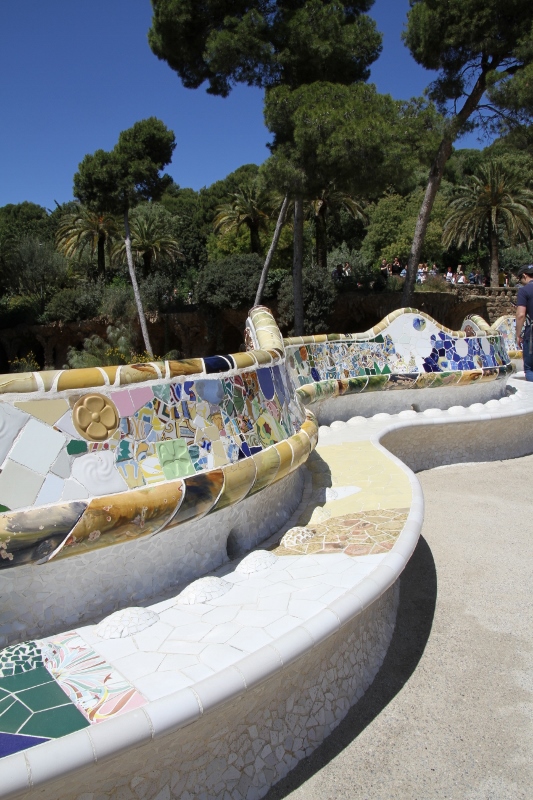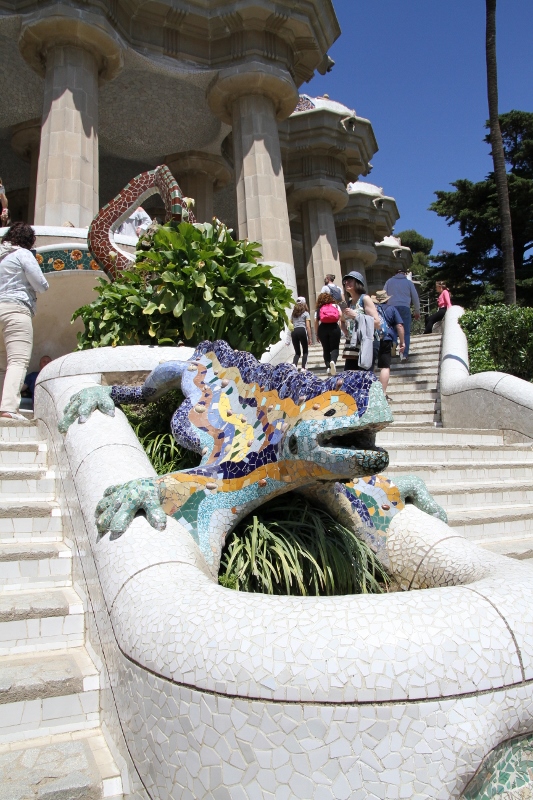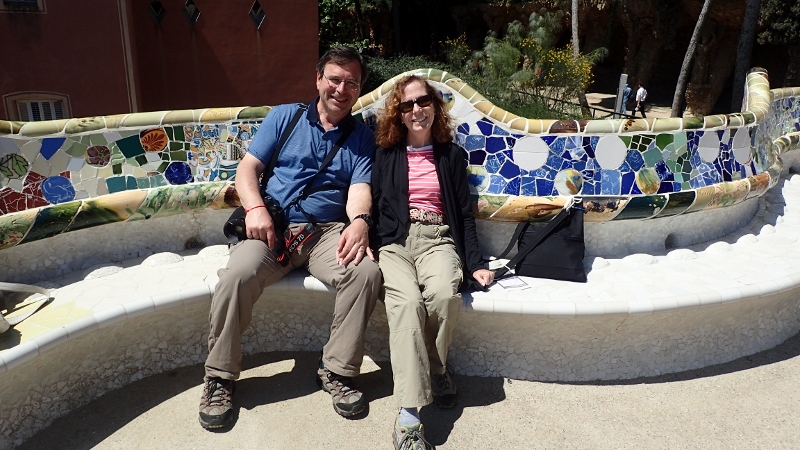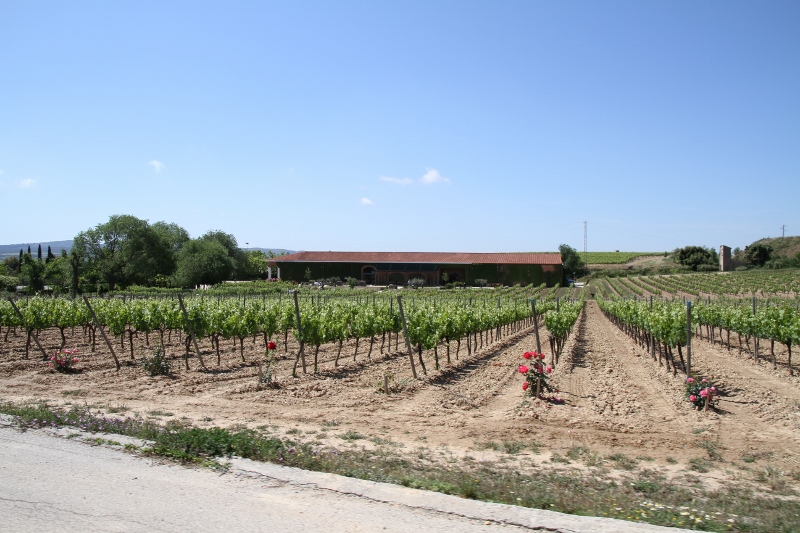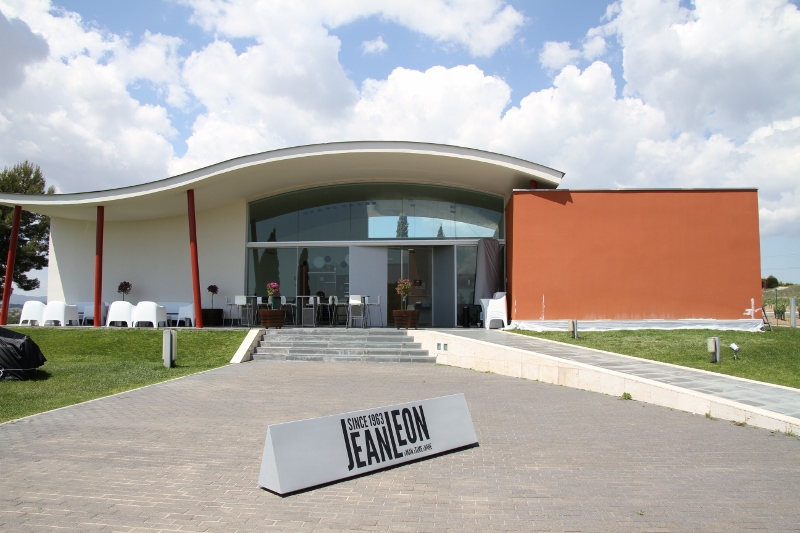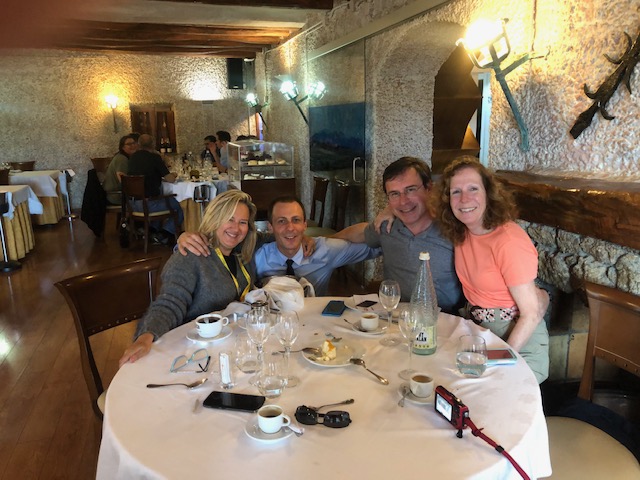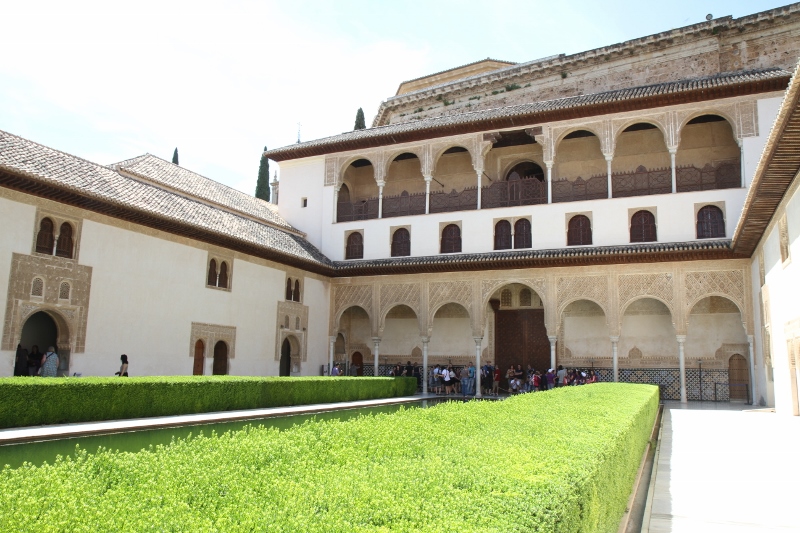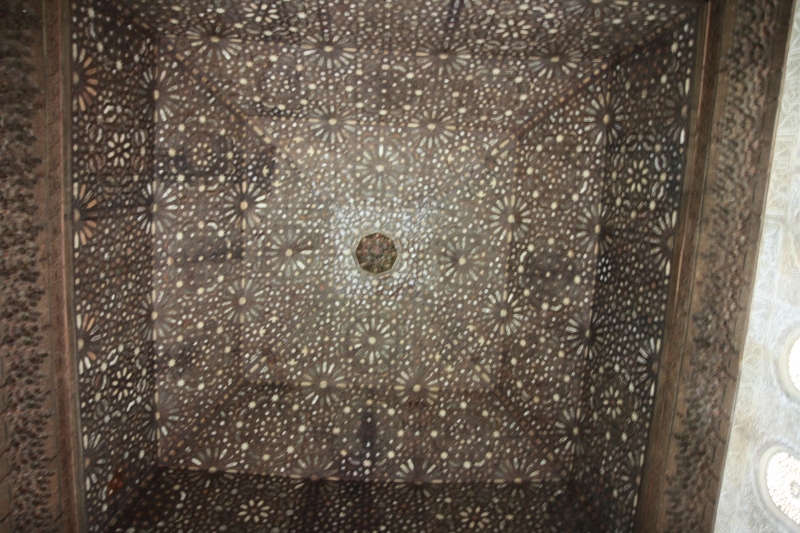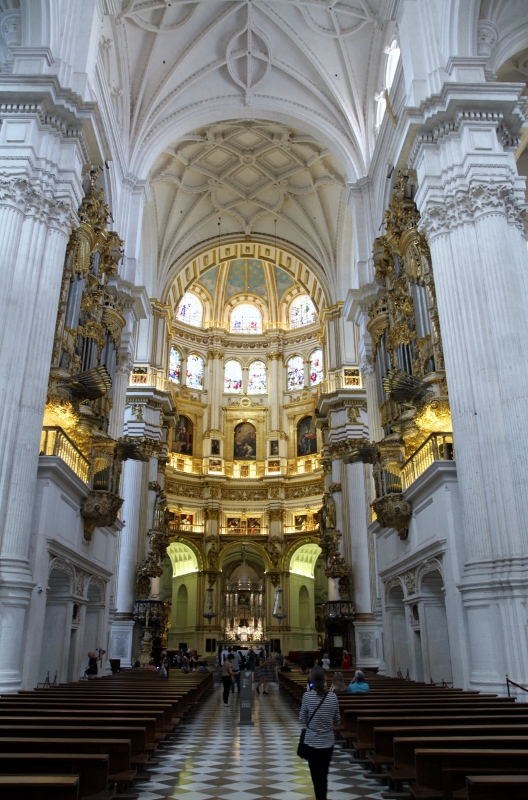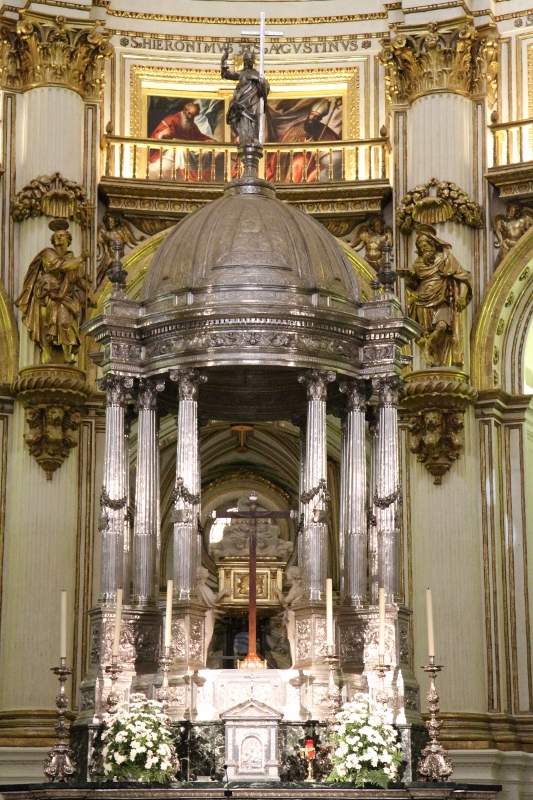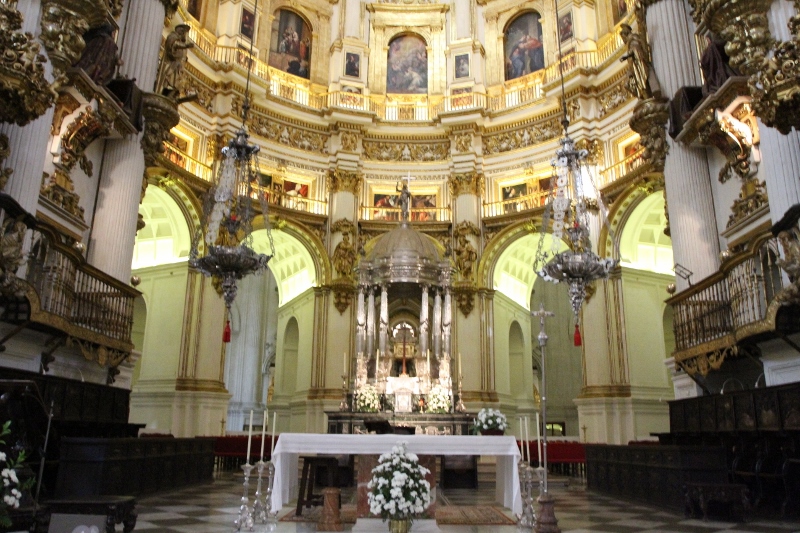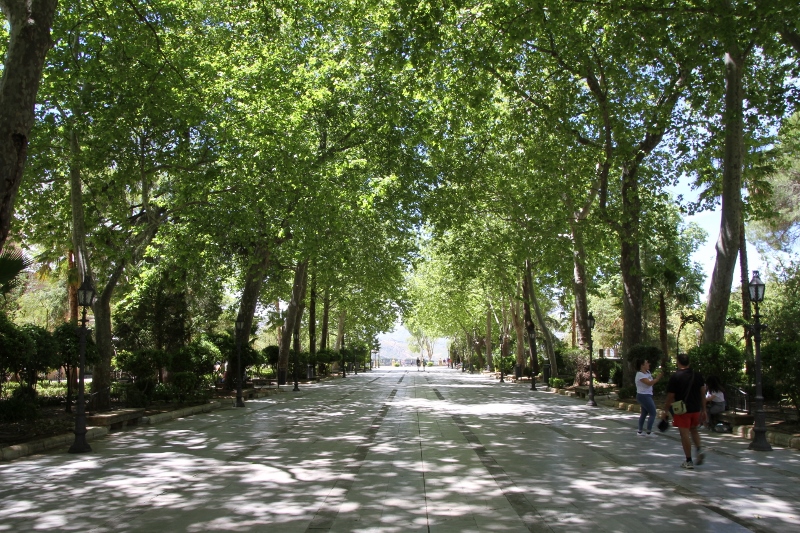I am going to try to put Spain into one post. I realize it does not do justice to all that we encountered in this lovely country, but we are only one week from returning from our adventure and I want to catch up. Over our 8 days in Spain we visited Barcelona, Granada and Seville with brief stop overs in Ronda and Cordoba. All were wonderful experiences and clearly, we need to come back for the food, the wine the people and the vibe.
In Spain breakfast is light, toast with tomato, olive oil and salt. Lunch is the main meal around 2:00 and light dinner is late, very late. At times we were just having dessert at 11:00 and some people were just starting! We quickly adjusted to the schedule as it made sense to be sitting at a table sipping wine, or sangria during the hottest part of the day. First things first, Jamon, or ham here in Spain is like a religion unto itself. Cured ham, from black pigs feed on acorns. The meat is carved from the hock at the table and will melt in your mouth! Next there is the toast, ubiquitous at every meal. And of course, paella. The version of paella varies depending on the region, but the traditional ingredient we found is rabbit.
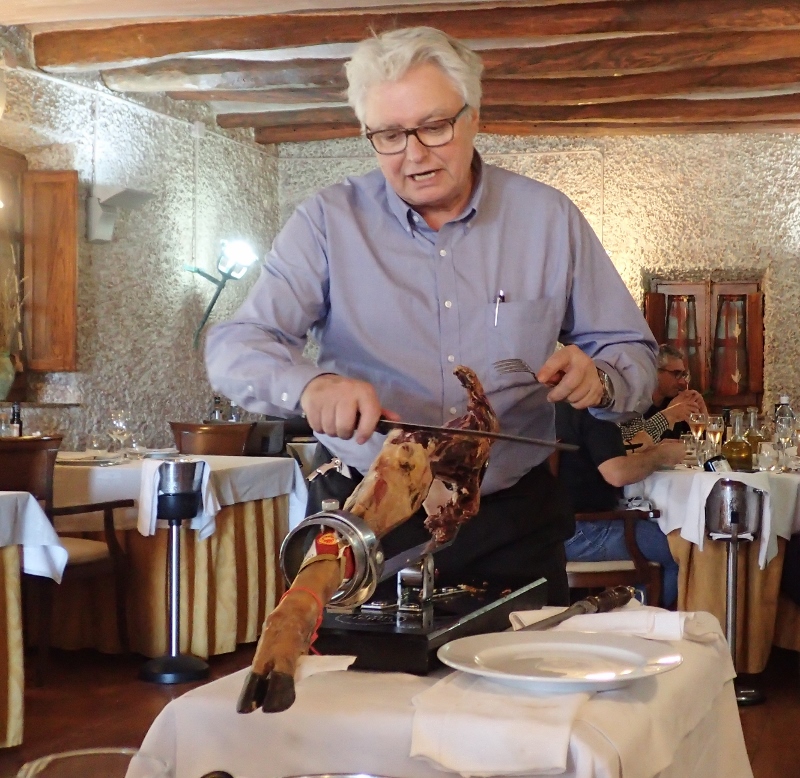
Jamon 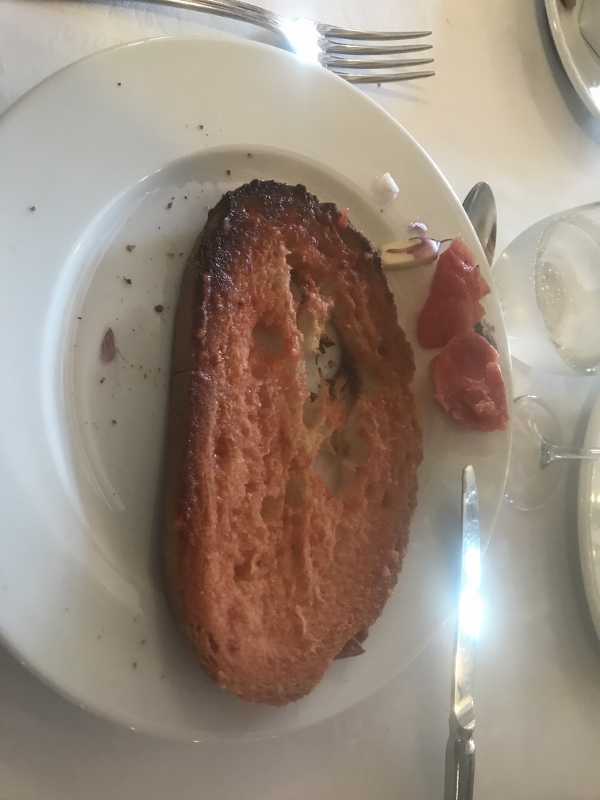
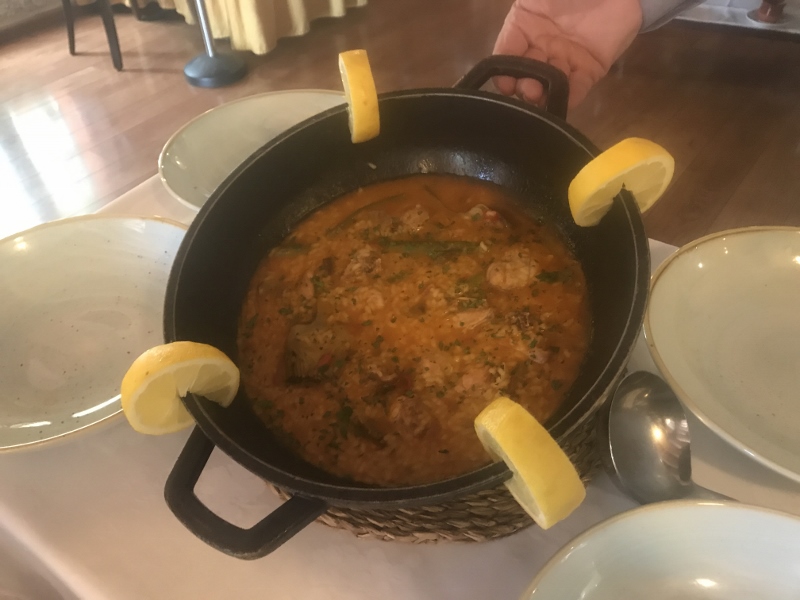
Barcelona
The capital of the autonomous region of Catalonia, you quickly learn that here they take their politics seriously and that independence is a very important subject to many. They retain their own language and their own flag, and you see yellow ribbons, symbolizing support for the separatists that have been jailed, everywhere.

Our hotel 
Plaza de la Catalunya 

Picasso designed this facade 
The cathedral 
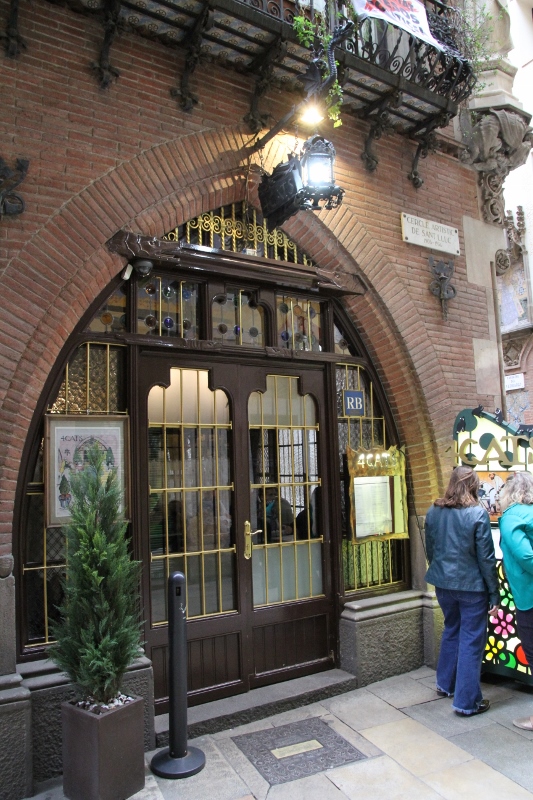
4 cats, where Picasso had his first 1 man show 
Stroll down Las Rambles 
Columbus 
Columnbus
The main attractions in Barcelona are the old city, where you can see the foundations of Barcino, the roman name for the city and various Roman remains including the pillars from the Temple of Augustus and a roman church and the Barcelona Cathedral.

Roman towers 

Temple of Augustus
Especially remarkable is the work of architect Antoni Gaudi, which can be seen throughout the city. His best-known work is the immense but still unfinished church of the Sagrada Familia which has been under construction since 1882 and is scheduled to be complete in 2026, the one-hundred-year anniversary of Gaudi’s death. My first view of this, from the rooftop of our hotel brought home the immensity of the project. One of Gaudi’s main contributions, in my opinion, is his recognition that it would not be finished in his lifetime, so while he left plans for how it should be finished, he recognized that subsequent generations would do so in their style. While retaining the symbolism of the original intent, the varying styles is quite evident in the sculptures that adorn the various entry facades to the church. Each entry, there will be three, represents a key point in the life of Jesus, the Nativity, the Passion and the Resurrection (yet to be built). Gaudi’s presence is also felt in other areas of the city.
Other sites in the city include the Palau de la Musica, a concert hall built in the early 1900’s in the modernista style, and the Picasso Museum. We were fortunate on this last as our guide was also a professor at the institute of art and took us through pointing out key highlights of Picasso’s life and works.

Palaus de La Musica 
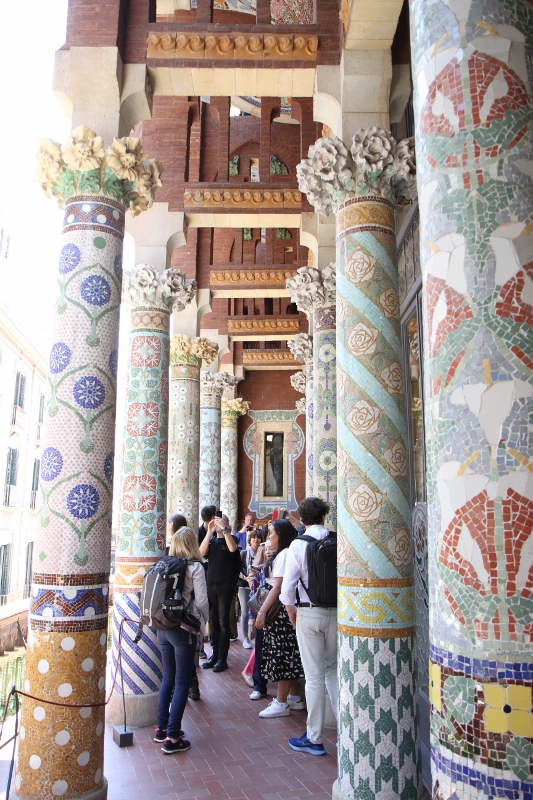





Self portrait 
Picasso’s Father 
His aunt, who paid the bills. 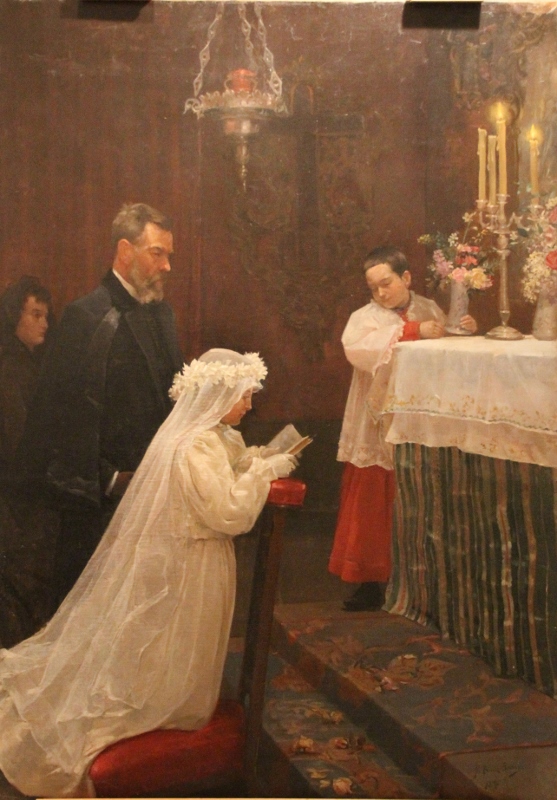
His sister’s first communion, his mother, is in the background.
At 16 Picasso painted this to demonstrate perspective. Not sure the pictures do it justice, but it is amazing as you change your position, the painting seems to change.

From the left 
From the right 
Wine and food are a part of life in Spain. It is the third largest producer of wine in the world. So, we could not forgo the opportunity to set out into the countryside to sample some of the local production. We started at the Torres Family winery, a large producer with wonderful facilities. Torres also makes a fabulous brandy. Then we went to the Jean Leon winery, smaller but very interesting. Jean Leon had a very storied life, that included a stint in Hollywood where he opened the restaurant La Scala. His daughter still runs the place. We then had a wonderful lunch with our guide and driver at a local restaurant / boutique hotel, Sol y Vi.
Granada

The city is located at the foot of the Sierra Nevada Mountains, and we could see snow still on the tops of the surrounding mountain tops! The name Granada means pomegranate and they are evident everywhere, in the streets, on the flag, even in the sidewalks.




The Alhambra
The main attraction in Granada is the Alhambra, an Arab citadel and palace. It is the most renowned building in the Islamic historical legacy in Spain. But there are many other smaller attractions through out the city, particularly in the old medieval city. These include houses from the 13th century and an Islamic bath house.


Narrow streets of the medieval town. 


Bath house 
Bath house
The Alhambra was originally constructed in 889 AD as a small fortress on the remains of Roman fortifications. It was converted into a royal palace in 1333 by Yusuf I, Sultan of Granada. In 1492 it became the royal court of Ferdinand and Isabella. The site was later abandoned and fell into disrepair for centuries. Rediscovered in the 19th century renovation began in part due to a book by Washington Irving which encouraged travelers and tourism to the site. Our tour of the Alhambra began walking through the Generalife, a pleasure palace with attached romantic gardens. It being May, the roses were blooming as were many other beautiful flowers.
The interiors were a fantastical display of Moorish art and architecture.
The Cathedral of Granada is built over the Nasrid Great Mosque of Granada in the center of the city. Its construction began in the early 16th century, shortly after the conquest of Granada.
Granada is the resting place of the “Catholic Monarchs”, Ferdinand and Isabella, as well as their daughter Joanna of Castile and her husband Felipe I. Their tomb is in the Royal Chapel built adjacent to the Cathedral. Pictures were not allowed inside here.
Ronda
We made a brief stop in Ronda for a look around and lunch. This mountain top city is set dramatically above a deep gorge, “El Tajo”, with beautiful views of the surrounding countryside. This is the site of the oldest bullfighting ring in Spain.
Seville
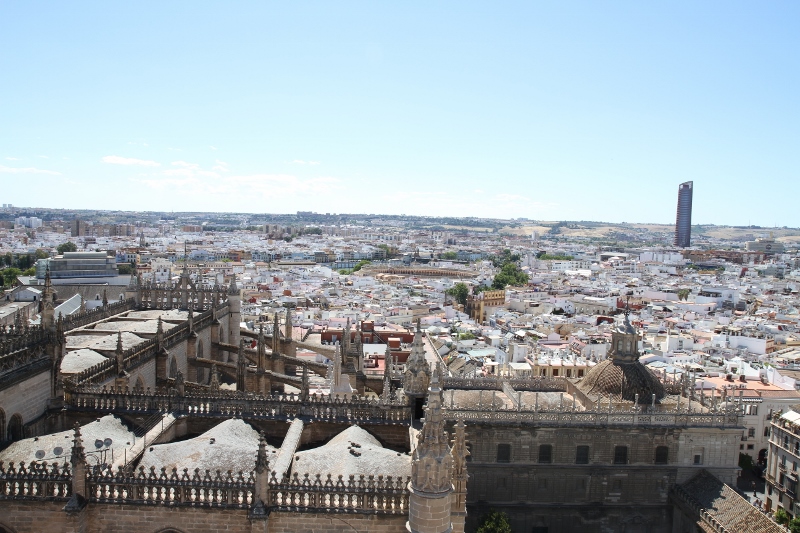
Founded as a Roman city today Seville has 1.5 million inhabitants making it the 4th largest city in Spain. It is a modern cosmopolitan city where history abounds.
This is the city where Cervantes was imprisoned and where, in the early 17th century, he wrote his seminal work, “The Ingenious Gentleman Sir Quixote of La Mancha”. Here is the final resting place of Christopher Columbus, within the Seville Cathedral (not buried in Spanish soil per his wish), the third largest church in the world and the largest Gothic Church. Here you will also find the Alcazar, one of the royal palaces of the ruling family that is still used as a residence, when they are in town.



Burial of Columbus’s son. 
Tomb of Columbus 






Original courtyard of the mosque. 
Gate to the Alcazar 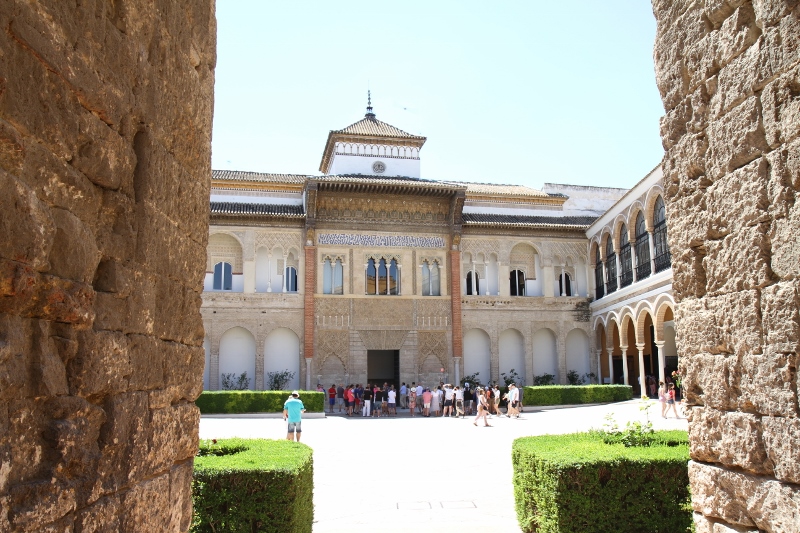






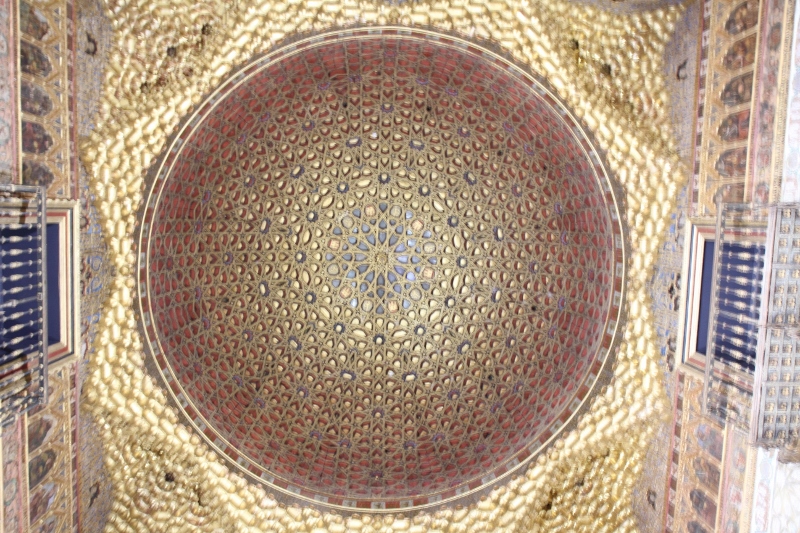


Gardens in the palace
Seville was host to the Ibero-American Exposition in 1929. This was an outreach to the Americas to show the world the contribution of Spain to the New World. It consisted of many buildings for each of the America’s countries built around a beautiful park.


They say it rains oranges in Seville. 
The park has many seating areas. 
Tiles depict the story of Don Quixote 
Free library in the park 


Each section represents a different city / region in Spain 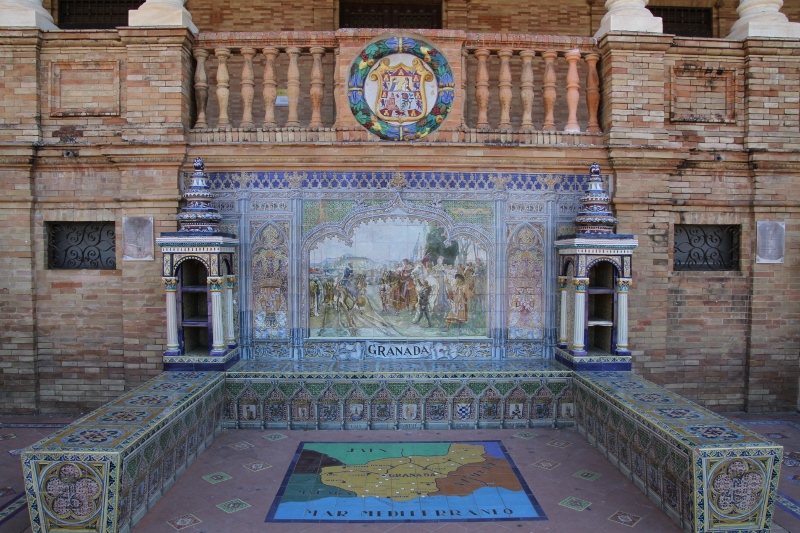


Statue dedicated to love. 
Love letters left by the statue 
Just about 8 miles from Seville is Italica, the remains of a Roman city, birthplace of two, possibly three emperors. At about ½ the capacity of the Colosseum in Rome, Italica’s amphitheater’s, 25,000 capacity was the third largest in the Roman Empire at the time.







The baths 
The image of medusa was used to scare the children 
Cordoba
As with many cities in Spain, Cordoba was a Roman settlement that in the 8th century became the capital of the Muslim emirate, and then the Caliphate of Cordoba that encompassed most of the Iberian Peninsula. It was the center of education and learning and by the 10th century had grown to be the largest city in Europe. There are many notable pieces of Moorish architecture throughout the city, most notable is the Mezquita. This was originally a mosque begun in the 8th century and enlarged through the centuries. When the Caliphate fell to Christian forces in 1236, the mosque was converted to a Roman Catholic church, culminating in the insertion of a Renaissance cathedral nave in the 16th century.

The Mezquita 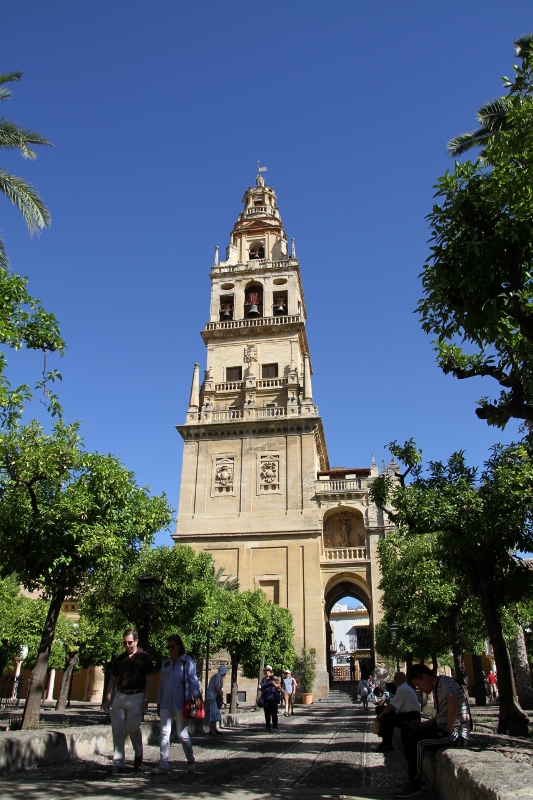
Bell Tower built around the minaret. 
Inside the cathedral 
The original church from the 400’s 



The monstrance 
Detail 
The organ 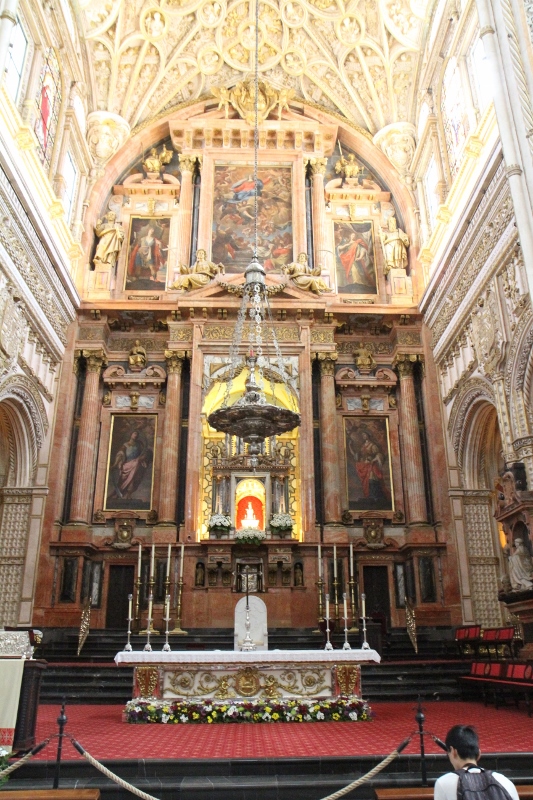

The choir 
Women working on leather 
Originally a bath house, now a venue for flamenco 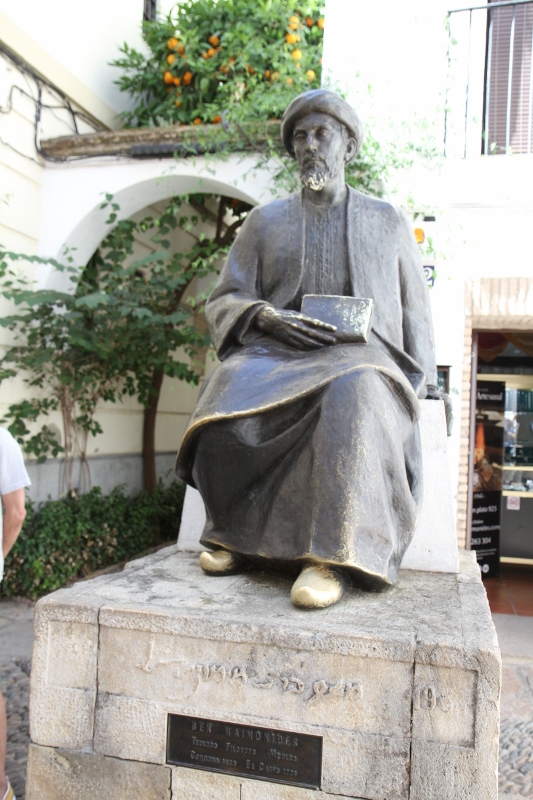
Maimonides 
Roman Bridge 
Gate to the city 
The flower street
Madrid
We arrived in Madrid late in the afternoon. This was only a one-night stay to catch a plane to Casablanca in the morning. But we did have some time to walk around and see a few sites we did not on our last trip here. Our walk took us first to the Puerta del sol, the “times square” of Madrid and the supposed center of Spain. We had some fun also walking to the Plaza Mayor.

The symbol of the city in Pureta del Sol 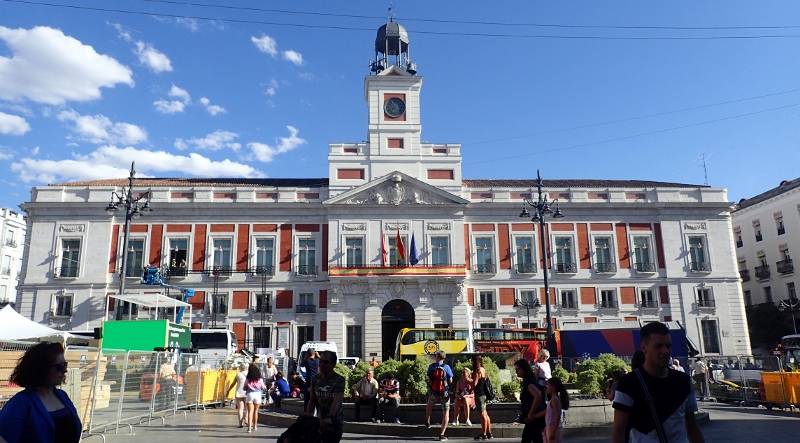
The old post office building. 
A fun statute 
The “center” of Spain



